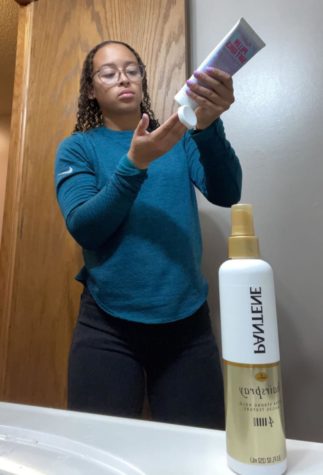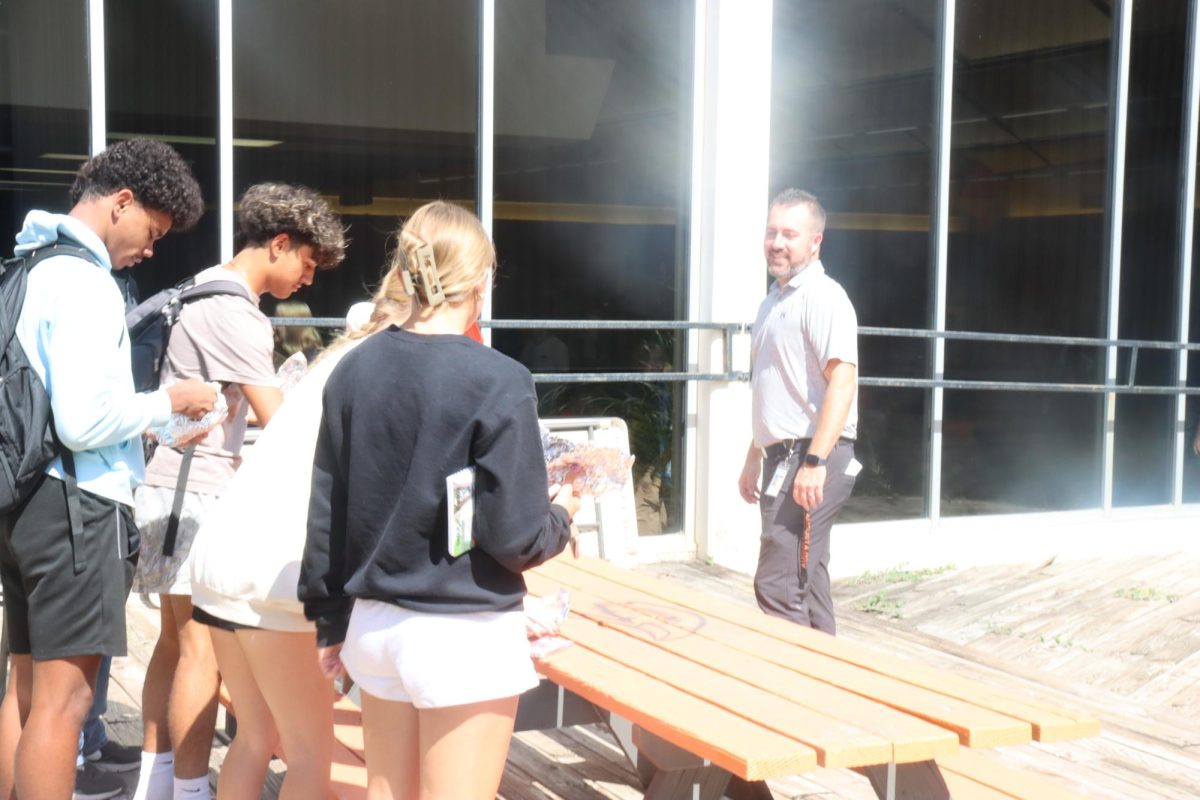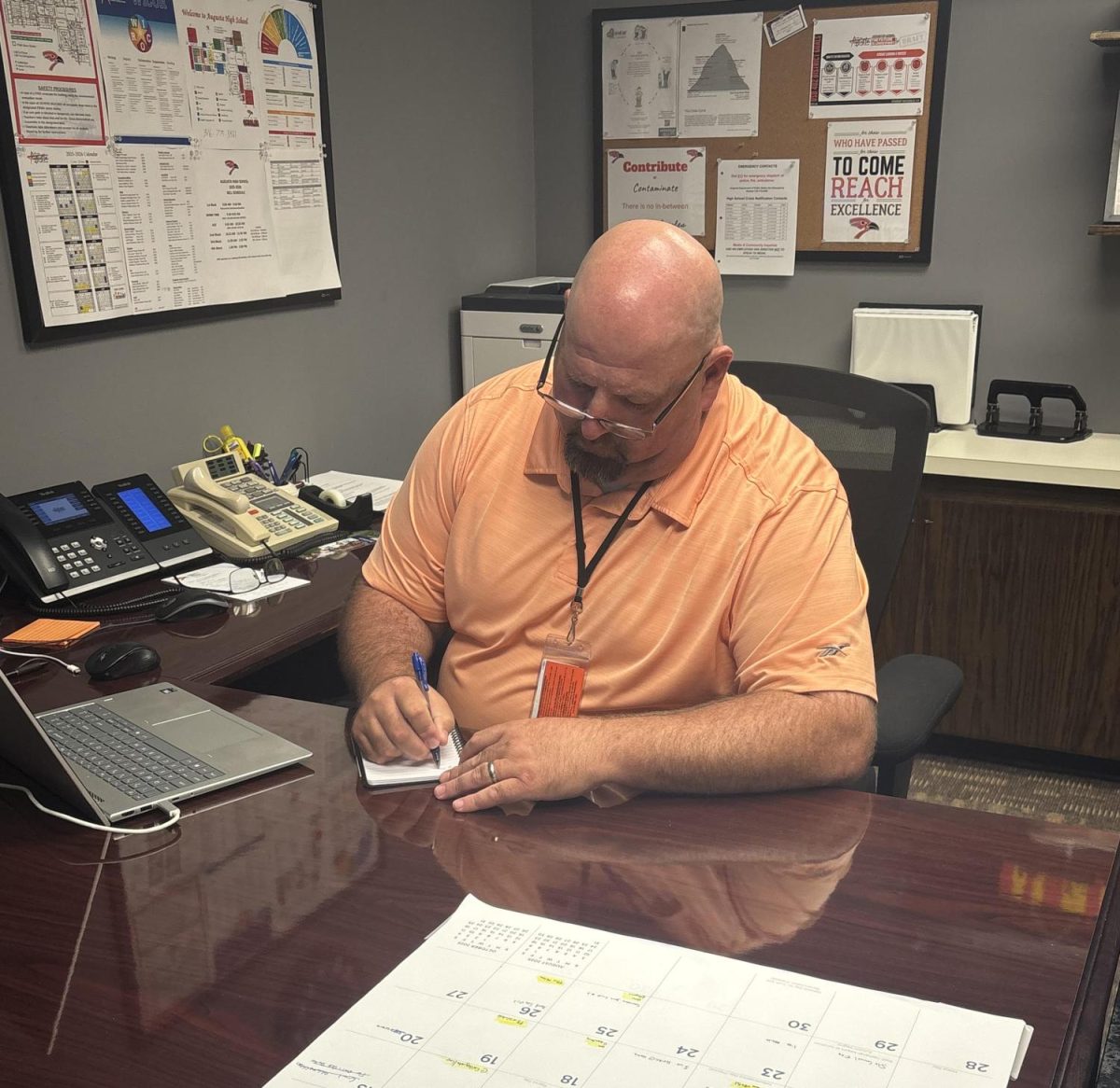An alarm blares signaling wake-up time. For some people, this means rolling out of bed at 7 a.m. and walking out the door, but for others this means the start of the process to make their hair cooperate.
“I only shampoo once or twice a week,” senior Trinity Tisdale said. “I condition, then I deep condition once a week, and after, I put in a leave-in conditioner and then a frizz serum, then I put in a curl activator cream to make it curl.”
More complex routines take much longer to accomplish than being able to hop out of bed and walk out the door.

“I normally shampoo once or twice a week, and then I condition every day and brush my hair out, let it dry and it’s good to go,” senior Carter Durrett said. “It just takes a little bit, maybe 30 minutes to an hour depending on how much work I put in.”
The density of someone’s hair can also affect their routine.
“I only have to wash it once a week because there is so much of it packed so densely into my head,” junior Ellison Whitlow said. “Typically, I wash it on Sunday night, I condition the heck out of it, and I let it air dry because heating it too much makes it frizzier than it already is.”
Curlier hair can call for multiple products simply to prepare it for the day.
“I wash it, and I dry it,” freshman TJ Turner said. “Then I condition it, and then I braid it, let it sit for 30 minutes, unbraid it, let it sit for another 30 minutes, then I use this honey stuff my mom bought me: put that on the ends of my hair to soften it, and then comb it through and put it in a little ponytail.”
Different hair types present obstacles in everyday life.
“The most challenging part is hoping that it dries the right way,” Tisdale said. “If I put too much product in it when it dries it’s really crunchy, or sometimes there’s not enough product, and it just gets really frizzy.”
Most people have specific ways they have to care for their hair.
“You can’t really brush it out the same way,” Durrett said. “You can’t brush down all the way around, then it won’t be poofy. You have to brush up and it’s like a three dimensional sculpture.”
Although some people are born with their hair as one texture, it can change as they grow up.
“My hair wasn’t naturally curly when I was born; it was actually naturally straight,” junior Maggie Pennycuff said. “It just turned curly one day. It was a mess; we didn’t know how to deal with it.”
Caring for curly hair is a difficult process, according to senior Adrian Walker.

“When I wake up, my hair is a disaster,” Walker said. “I can’t take a nap without having to redo my hair. No heat, no brushing, you can’t use the wrong shampoos or conditioners. It’s hard to style, you have to figure out what works for you and that takes a long time.”
Even straight hair has extra steps to keep it manageable.
“I had a chemical straightening treatment that basically made my hair smoother and made each individual hair strand less coarse and thick, so it’s been easier to maintain,” Whitlow said. “It takes eight hours of sitting in a chair once a year, but I think it’s worth it.”
Students such as Tisdale must plan their day around their hair in order to keep it presentable.
“It’s pretty hard to manage,” Tisdale said. “On days I have an athletic class, I can’t wear my hair curly. If I’m doing dance practice, I can’t wear my hair down; I have to wear it up. I can’t just change my part or change a section and brush it out, it doesn’t work that way.”
Curly hair also presents challenges in styling.
“Putting it up in ponytails, braids, buns: I have so much hair on my head that it poofs out, and I have to strangle it so much and then tie it tight,” Turner said. “I have to have 10 to 12 hairpins in my head to tame it.”
When deciding how her hair should look during the day, Whitlow must keep in mind the consequences.
“I try not to wear it in really high ponytails very often because it leads to breakage,” Whitlow said. “I try not to overbrush it, make sure it stays conditioned, try not to straighten it a bunch or blow dry a bunch.”
After all the work it takes for Tisdale to put together her hair, she hates when people try to touch it.
“It takes a lot to get it looking right, so coming up to me every five seconds and wanting to touch my hair and grab it is not my favorite thing,” Tisdale said. “Especially when they don’t ask me and just start combing through my hair.”

Along with all the time it takes to care for curly hair, it also costs a lot of money to maintain.
“It’s expensive to have my hair, I have to have a million different products,” Tisdale said. “Everyone that says, ‘I wish I had curly hair,’ well, I wish I had straight hair. Grass is not greener on the other side.”








